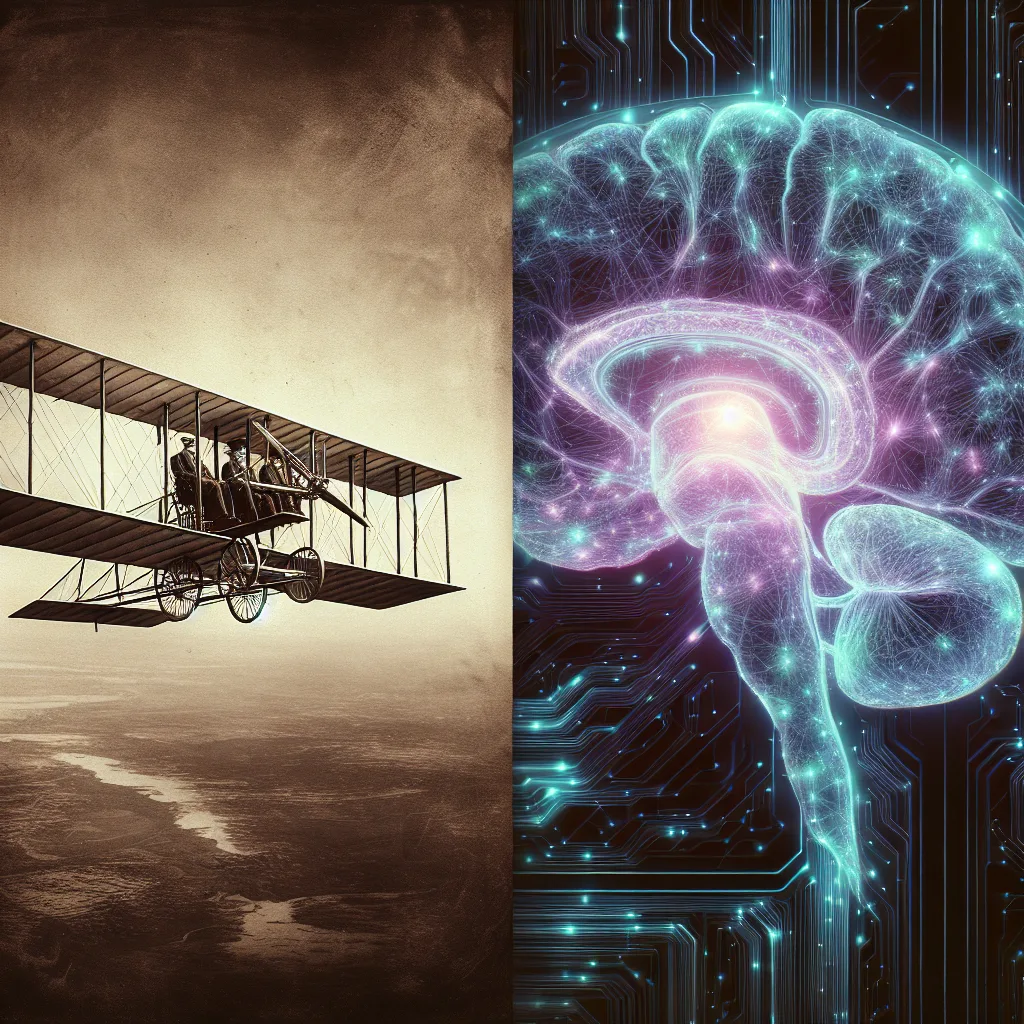I was thinking about the future of AI development, and it hit me: we’ve seen this trajectory before, from a grainy photo in 1903 to putting a man on the Moon.
I was grabbing coffee the other day and found myself thinking about the dizzying pace of AI. It feels like every week there’s a new model that’s bigger, smarter, and more capable than the last. It’s exciting, but also a little overwhelming. It made me wonder about the future of AI development and where this is all heading. And then an interesting analogy popped into my head: the early days of aviation.
It feels like we’re in a similar period of explosive growth. Think about it. In 1903, the Wright brothers managed a flight that lasted just 12 seconds. It was a monumental achievement, but barely got them off the ground. Just 66 years later, in 1969, Neil Armstrong took his first steps on the moon. From a rickety wood-and-fabric plane to a complex spacecraft that traveled a quarter-million miles – all within a single human lifetime. It’s one of the most incredible stories of technological progress ever.
The “Moonshot” Phase of AI Development
That period in aviation was all about breaking physical barriers. The goal was to fly higher, faster, and farther. The moon landing was the ultimate expression of this – a massive, expensive, and audacious goal driven by the question, “Can we do this?”
Doesn’t that feel a lot like where we are with AI right now? We’re in our own moonshot era. The race is on to build the largest Large Language Models (LLMs) with the most parameters. It’s a competition for sheer scale and capability. Every new release is a spectacle, pushing the boundaries of what we thought was possible. And just like the space race, it’s incredibly impressive.
But what happened after we landed on the Moon? We didn’t immediately set off for Mars. The challenges shifted. It was no longer about proving it could be done, but about sustainability, cost, and purpose. The Concorde jet was an engineering marvel, but it wasn’t economically viable. The focus of aviation turned to efficiency, safety, and specialized aircraft built for specific jobs. You don’t use a 747 to deliver a small package, and you don’t use a crop duster for international travel.
What’s Next for the Future of AI Development?
I think we’re approaching a similar turning point in the future of AI development. The “race for size” is thrilling, but it can’t last forever. Running these massive models is incredibly expensive and energy-intensive. Soon, the driving questions will likely change from “How big can we make it?” to something more practical:
- How efficient can we make it? We’re already seeing a trend toward smaller, more optimized models. These models are designed to run faster, use less energy, and even operate directly on your phone or laptop instead of a massive data center. They might not be able to write a novel and code a website simultaneously, but they can be exceptionally good at one or two things.
- How specialized can we make it? Instead of one giant AI that knows everything, we’ll likely see a future with many specialized AIs. Think of a model fine-tuned specifically for medical diagnostics, another for reviewing legal documents, and a third that’s a brilliant coding assistant. They would be experts in their field – more accurate, reliable, and affordable than a general-purpose giant.
This is the natural next step. The foundational work is being laid right now, much like the Apollo program laid the groundwork for decades of space exploration and satellite technology. The current AI boom is creating the tools and understanding we need for the next, more practical phase.
The End of the Beginning
So, are we at the peak of AI? I don’t think so. I think we’re just at the end of the beginning. The spectacle of the moonshot era will likely fade, but it will be replaced by something quieter, more sustainable, and ultimately more useful.
The future of AI development probably isn’t one single, super-intelligent computer from a sci-fi movie. It’s more likely a diverse ecosystem of specialized, efficient tools that work quietly in the background, making everything a little bit better, faster, and smarter—much like how aviation evolved from the Wright brothers’ historic flight into the vast, essential network of modern air travel we rely on today. And honestly, that future feels just as exciting.
